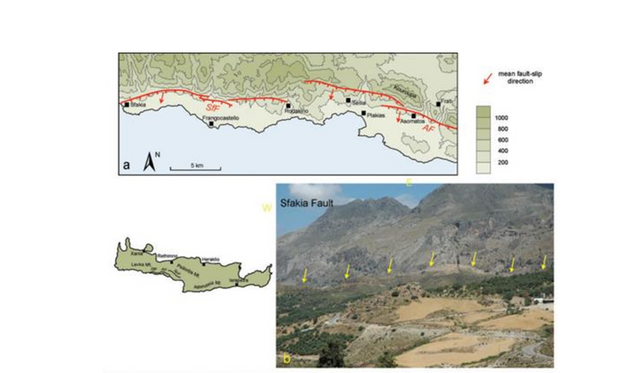Open grassland ecosystem by the shore-line, which then collapsed into the Sea of Afar as Danakil migrated in a counter-clockwise rotation, north-east, where most of the vertebrate fauna in fossil sites like Hadar is found in sands and sandstones[1], which originate from Danakil and form brief layers within the lacustrine sediments from the sea.
The geography of Pliocene Danakil could perhaps be similar to the island of Crete, one of the most seismically active areas in the eastern Mediterranean.[2]

That the open grassland on Danakil was deposited by faulting of the higher regions (similar to how the coast-line of Crete has formed), and that those open grasslands in turn were deposited into the Sea of Afar as Danakil rotated counter-clockwise, means that the entire fossil record of the coastal ecosystem on Danakil has been dispersed into Afar, and can be read along fossil sites like Hadar in the Lower Awash, or further south-west at Aramis in the Middle Awash.
The Danakil-origin of the sands and sandstones where vertebrate fossils are found, also means that older species, like Ardipithecus, are found closer to Ethiopia.